Podcasting - Part 1: Despite huge opportunity, where India lacks in tapping the potential?
The podcast industry in India is booming, especially during and after the pandemic. Once a hugely popular medium in the west, especially in the US, podcasting has come of age here, with the proliferation of an army of podcasters all over the country and a steadily growing audience. Since 2016, there has been an exponential growth in the number of podcast listeners in the country. Unlike traditional radio, podcasting has manifold advantages, primarily its on-demand nature, diversity in topics covered, and option of personalisation.
In this two-part series, Adgully attempts to uncover the true potential of podcasting.
However, despite the growth surge, India, agree podcasters, still lacks awareness of the word “podcast.” Is it because a majority of us listen to the radio and not Internet radio, especially in the hinterlands?
India may lack the awareness of the general term ‘podcast’, but are not aloof from knowing that there is an alternate form of audio content consumption other than just radio, says Aditya Bathija, Associate Business Director (Mammoth Media) at Zoo Media. “It’s not necessary that the word podcast needs to be always mentioned. We are currently No. 3 in the world when it comes to podcast consumption after the US and China,” he points out.
Bhatija believes that there is a great potential for podcasting in India given the peculiarities of the country. According to him, podcasts have been in India for a while, but saw a massive uptick before the pandemic. “Have we reached everyone in hinterland India? Not yet. Have we made a reasonable amount of progress in regional podcasts? Absolutely – Gaana, Khabri, Jio Saavn and a few other apps have been the frontrunners when it comes to creating multilingual and region-specific podcasts (They can be fiction or non-fiction). A new form of media is always difficult to adapt to when there is already something that exists and people are comfortable consuming it (radio); however, with the new wave of internet-savvy generation, we may see a big change when it comes to audio consumption,” says Bhatija.
Chhavi Sachdev, Founder of Sonologue Podcast Productions, strongly feels that there is a lack of awareness and disconnect between the makers of podcasts and the potential target audience.
“So, you would imagine because we have such a rich heritage and tradition of listening to the radio, that India would be a perfect market for podcasting. And it is not because we are not listening to Internet radio. Many people in the hinterlands are listening to broadcasts on YouTube as well as pre-recorded shows on their smart phones and feature phones. I think there is just a lack of awareness and disconnect between the makers of podcasts and the potential target audience. It is a huge missed opportunity by the big brands in trying to educate people about what podcasting is. When Gaana started podcasts they put up big posters in Mumbai of the people on the podcasts like Neha Dupia, without explaining at all what was going on and expecting audiences to do the work of heavylifting of finding what a podcast is. I think that is the biggest reason for the lack of awareness. Not because we listen to radio on devices of a different kind or programming of a different kind,” says Sachdev.
While India has a great history of listening to audio stories for time immemorial, "podcast" as a term sounds foreign, feels WYN Studio Co-founder-CCO Bijay Gautam. This term comes from iPod + Broadcast. He goes on to explain, “If we think about it, iPod was not the thing here in India, especially the hinterlands. This makes it difficult for people to understand what exactly podcast is, by the name of it. Having said that, people are slowly getting to know what a podcast is since they see their favourite Bollywood celebrities and creators creating or appearing on podcasts. Moreover, it is almost impossible for one not to notice podcasts on any music streaming platforms, right from Gaana, which has a deep penetration in tier 2,3, and 4 cities, to Spotify. Some platforms have done a good job in naming these audio programmes as "audio shows" instead of podcasts. This is a more widely acknowledged term.”
The word podcast has slowly come to the lexicon of the Indian content consumer, feels Aditya Kuber, Co-Founder-CEO, Ideabrew Studios. This awareness, he adds, will grow as more content becomes available to listeners in their native languages.
“As Internet penetration grows, this will also improve further since more people will discover relevant content. Over the last few years, the listener base for podcasts has grown from just about 4 million in 2016 to now reach almost 75 million. So there is definitely some positive movement,” says Kuber.
Radio has been an established means of communication for the longest time now, and in comparison, podcasts are truly in their infancy, notes Divyansh Gala, Group Head - Outreach, SoCheers. So, Gala adds, it won’t be fair to compare their popularity at this stage. “Yes, the Indian masses love listening to the radio, be it the songs, the radio jockeys giving daily gupshup and news, the cricket commentary or the listeners speaking to the RJs. What this points towards in a larger sense is the overall appreciation for audio content among the audiences. Seemingly, despite having this stage, the podcast medium hasn’t been able to build a strong grip. The major issue, I believe, is discoverability, especially in the hinterlands. But we're gradually overcoming it. The growing number of smartphone users in the tier 2-3 cities and beyond, definitely helps the medium reach a much larger audience. Moreover, the sustained adoption of OTT even after the pandemic is a testament to how mobile-first video & audio content consumption has increased in India. So, it's just a matter of people easily discovering podcast platforms and we are in for a revolution in the podcast industry,” he adds.
While the word “podcast” lacks awareness, Indians, especially in the hinterlands, have experienced talk radio, or audio dramas in the past, before television became common, says Rohan Thakar, Co-Founder & Creative Producer, Ep.Log Media. Even today, he adds, community radio focuses more on talk.
“However, I agree that the listeners have not had much experience listening to podcasts primarily because the content today has still been more oriented or targeted towards the urban audiences. We at Ep.Log have been taking efforts in changing that through our regional content, especially in the Marathi-speaking audiences and have seen incredible engagement and response for the same,” Thakar says.
Attributing the lack of sufficient awareness about “podcast” to infrastructural issues and awareness about the medium, Kathanika Media LLP founder Nikhil Dintakuthi. feels that the situation is, however, changing, as people are more adapting to smart phones and music apps like Gaana, JioSavan, Spotify etc.
They are discovering podcasts along with music, when you look at comprehensive data of some of the top shows from last two years, the demographics and geo locations has changed from top metropolitan cities to tier 2 & 3 cities and, the content has also changed in the last two years. There more shows now in regional languages primarily and targeting specific set of audience other than Hindi and English. It will take some time for people who are not aware of long-format audio content to get adapted to this. But, as the data suggests, people who found it are forming a habit of listening to it regularly.”
Divyansh Gala feels that there is still scope for experimentation. “It is safe to say that creators have been continuously working towards creating new types of podcasts to introduce new formats of audio storytelling. But there is still room for a lot of experimentation. Also, when leveraging the podcast medium, a lot more effort needs to go into identifying the best-suited podcast platforms, based on where the target audiences are. Moreover, businesses are yet to strongly tap the brand integration aspect of it, which shows a lot of potential, especially seeing how such integrations are soaring in the digital video space,” he adds.
Podcasts in India are quite a new concept, a couple of old concepts packaged in a much more organised way, feels Hitarth Dadia, partner & CMO at Nofiltr.Group. According to him, the audience in India is used to consuming highly visual content and the crowd that consumes the content through radio or any other form of audio is too used to either listening to music or basic news or gossip.
“The thing with podcasts is, there are a lot of them. However, most of them add a lot of additional value. So, comparing podcasts with radio won’t be a good idea as radio has its constraints. Let us say, one can hear a four-hour long podcast. It adds value to their life subsequently if one is listening to the radio, a lot more can happen in that period. As it is full of constant advertisements and jingles in it. What I have seen is, the Indian audience is extremely loyal to our content. For example, we are too used to sitting down with our family and maybe watching this one show that we all are hooked to. It doesn't matter how many years it goes; every day we all will come together during our dinner or evening snacks to binge the show and we will see that every day till the show ends. Podcasts are expecting the older generation to change their way of consuming content and switch to podcasts which is a bit difficult. I think to give it a couple of years, the current generation is very heavy on podcasts, we want to multi-task and gain knowledge. I believe in a way podcasts do compete with the music of our generation. When we are doing our laundry or dishes or maybe even driving, we opt for podcasts over the music to add value to our knowledge. With that being said, if a podcast is a package of highly value-adding utilities, we cannot listen to that while multitasking and need a proper environment. That is difficult as we live and thrive in a chaotic environment which is why I don't see the trend going up, however in near future I do see podcasts being the new trend,” he says.
Indian potential
India offers a huge opportunity for the podcast industry to thrive. But are we tapping it to its fullest potential?
Chavvi Sachdev agrees that we are not tapping into the full potential. “We are very insular and siloed even now and there are great working models all over the world about how podcasting can be used as well as consumed to serve brands, listeners, and fans.”
Penetration of new-media consumption is not that easy, says Aditya Bhatija. “We’re amongst the top three podcast consumption countries and growing at a good rate when it comes to multilingual podcasts which shows that we are ticking the right boxes when it comes to growing podcasts as a new media. We also have the creator economy, which have now started stepping onto the podcast bandwagon and that I feel is great because it is highly relatable between them and their audience,” says Bhatija.
Currently, everyone is in the exploratory mode, testing and trying what works and what doesn't, says Nikhil Dintakuthi. To develop a medium into a full-blown market, he explains, you need both the demand and supply side of it, and everyone is contributing to the overall knowledge of who likes what and to what extent. “Either it might be podcast networks with hundreds of shows or independent creators. There is still a lot to explore in this medium and untapped potential for sure.”
While traditional radio has a lot of regulatory restrictions they have to deal with, podcast solves them, maintains Bijay Gautam.
According to him, there are no restrictions on the type of content you can create on the podcasts. He, however, feels that India is yet to see as many podcast creators as there are in YouTube or Instagram.
“One can find podcasts on wide-ranging topics from politics to mental health and everything in between. This enables anyone with a topic in their mind to start a podcast of their own. Yet, we don't have as many podcast creators as Instagram or YouTube creators. While we’ve seen a big boom in the ed-tech space, we’re yet to see the emergence of audio ed-tech space. For instance, the mega podcast stars in China are not celebrities or influencers they are teachers and entrepreneurs. The people who are sitting on a lot of content that people can learn from. Learning about audio makes it easy for people to consume content wherever they go. Even in the storytelling segment, we can do a much better job with wide-ranging storytelling podcasts. In the west, true crime is one of the hottest podcast categories. We're yet to have our serial moment that makes podcast a household name,” says Gautam.
It’s a work in progress, feels Aditya Kuber. According to him, podcasts have evolved to include all things audio. “Traditionally, a podcast was a conversation between two or more people or at times, a monologue. Today, however, it includes audio dramas across genres and this is a result of creator growth and consumer interest. While much work remains to be done, a lot has already been accomplished,” he says.
There is definitely a huge scope for podcasts in the near future, says Hitarth Dadia. “Cab drivers watch a lot of content the moment they sit in their cabs. Content right now obviously is different right now than podcasts but they actually do binge content. They don't go on Spotify for podcasts, or for general happening in the country, because they are not aware of those mediums. For them, the news is updated either on the radio or now on YouTube. I feel, as soon as many people are aware of podcasts and what it adds to the life of people, they will embrace it with open arms,” he says.
(Tomorrow - Part two: The lacuna plaguing the podcast segment and are businesses and brands tapping the true potential of podcasting?)



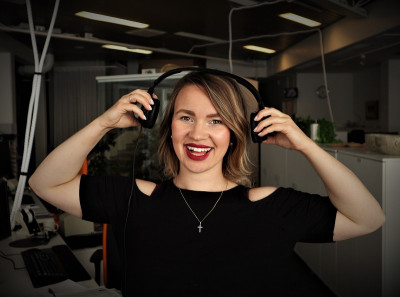
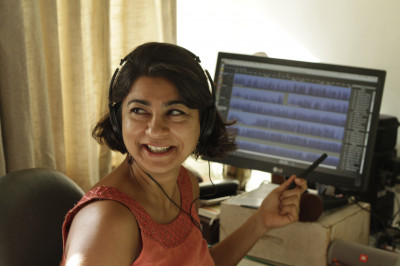
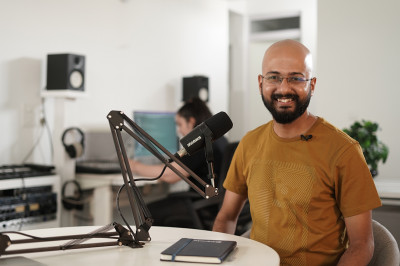
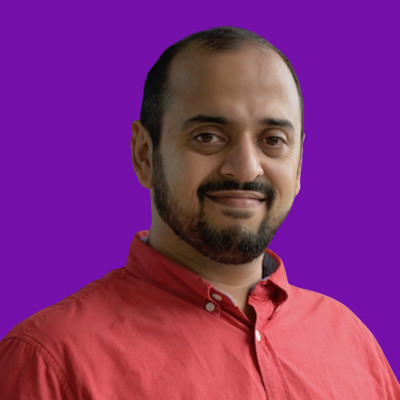
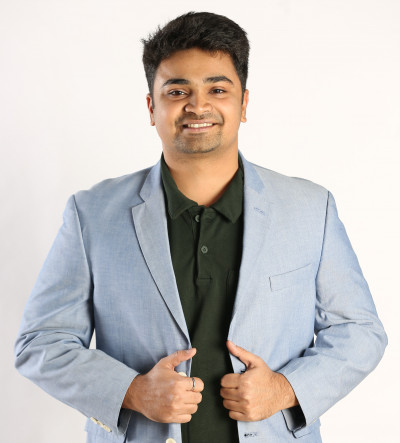
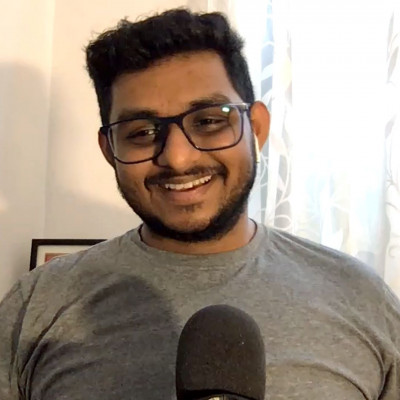
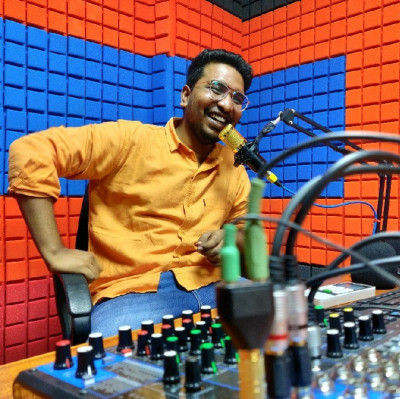


Share
Facebook
YouTube
Tweet
Twitter
LinkedIn